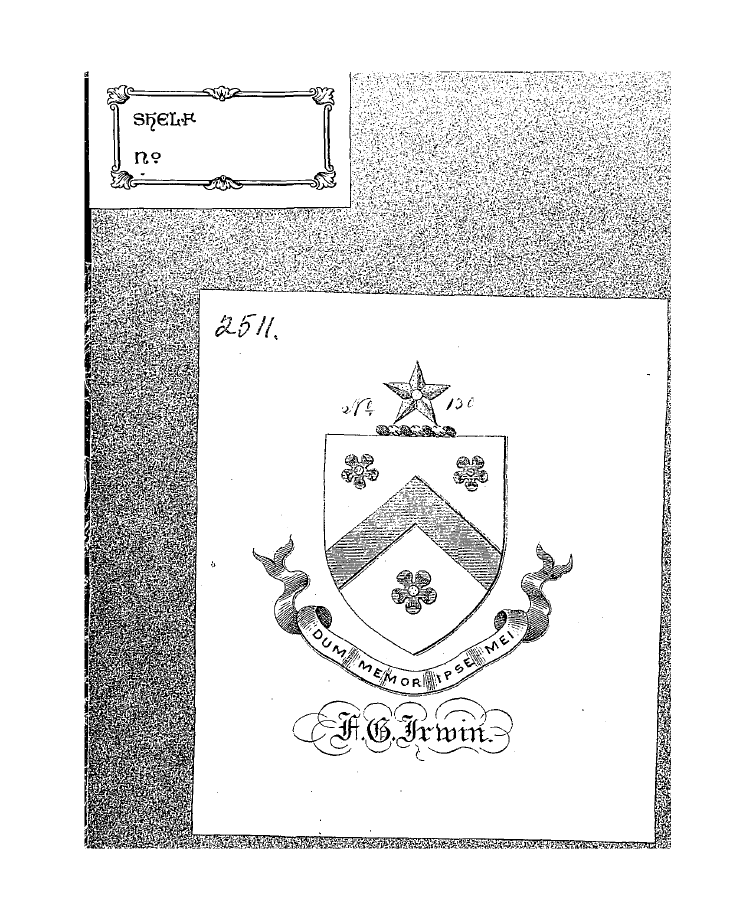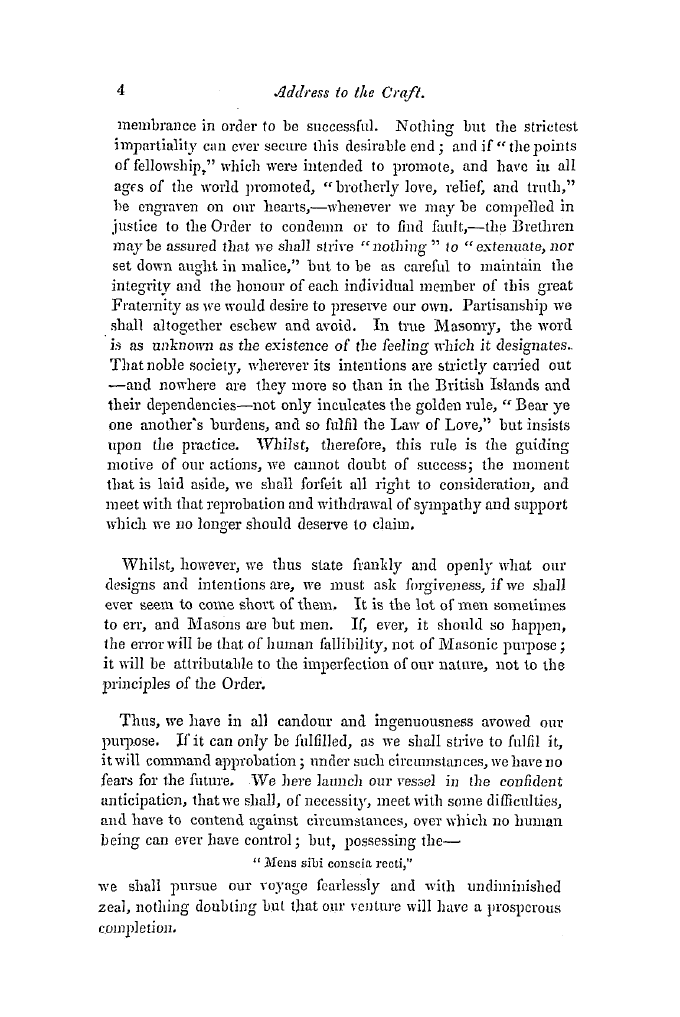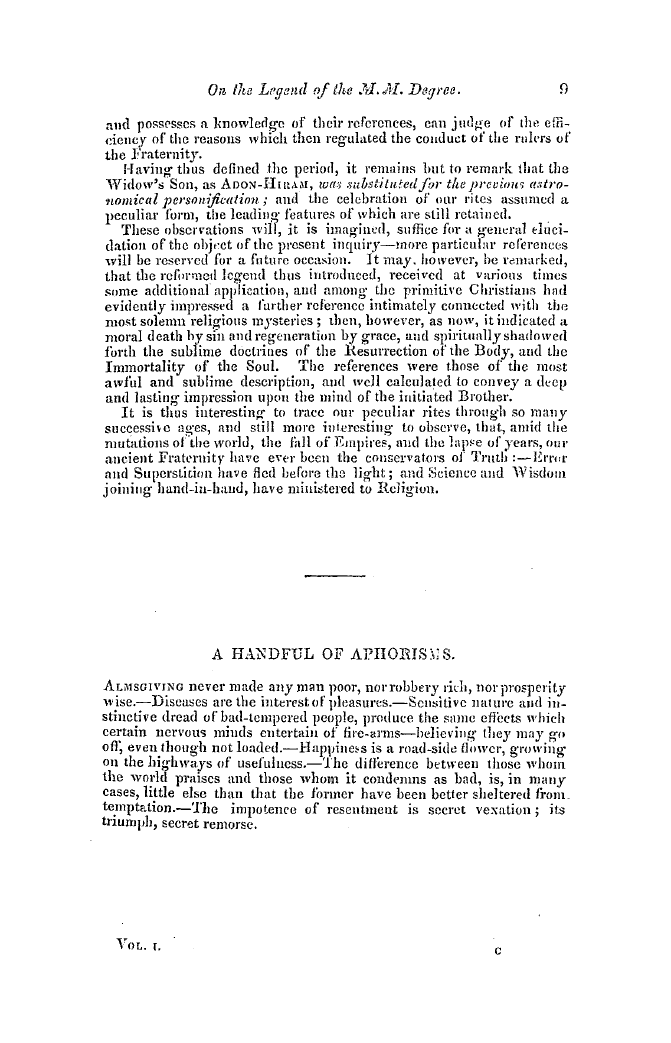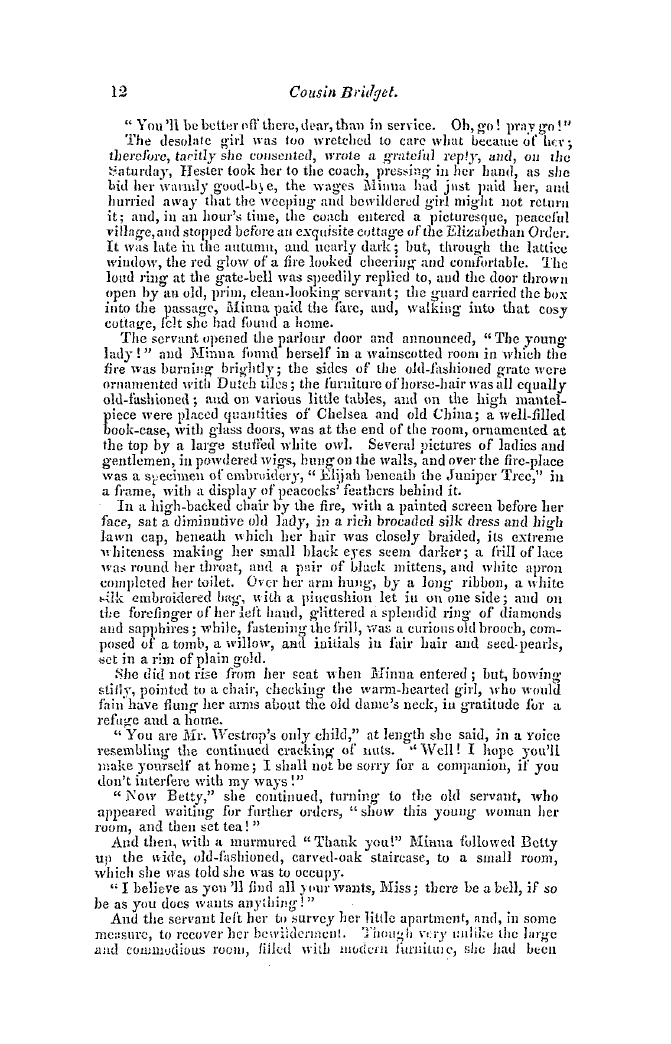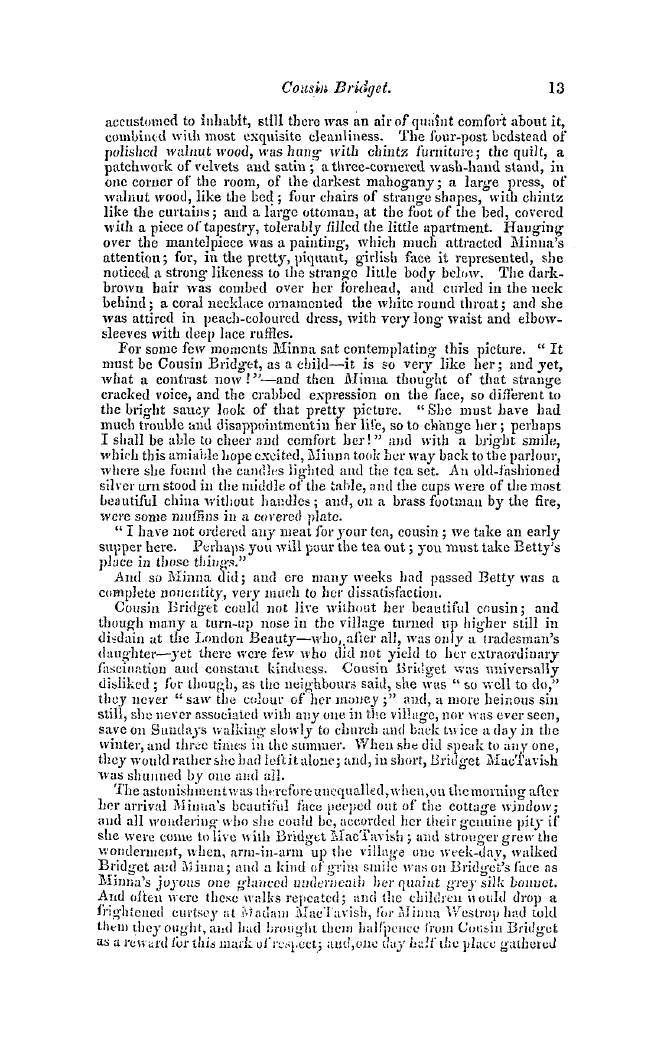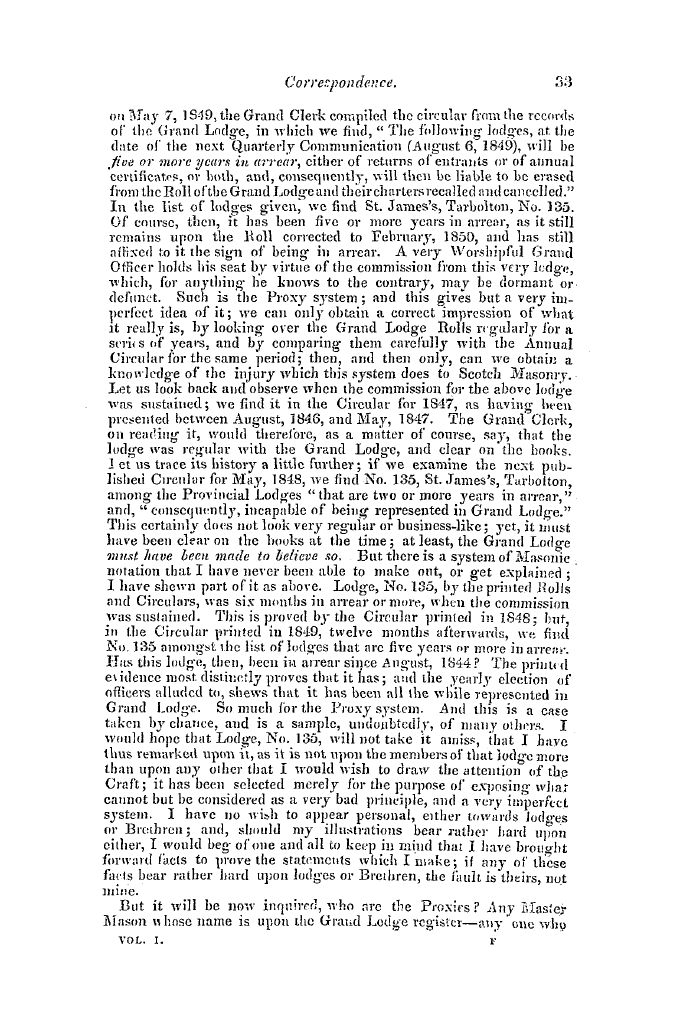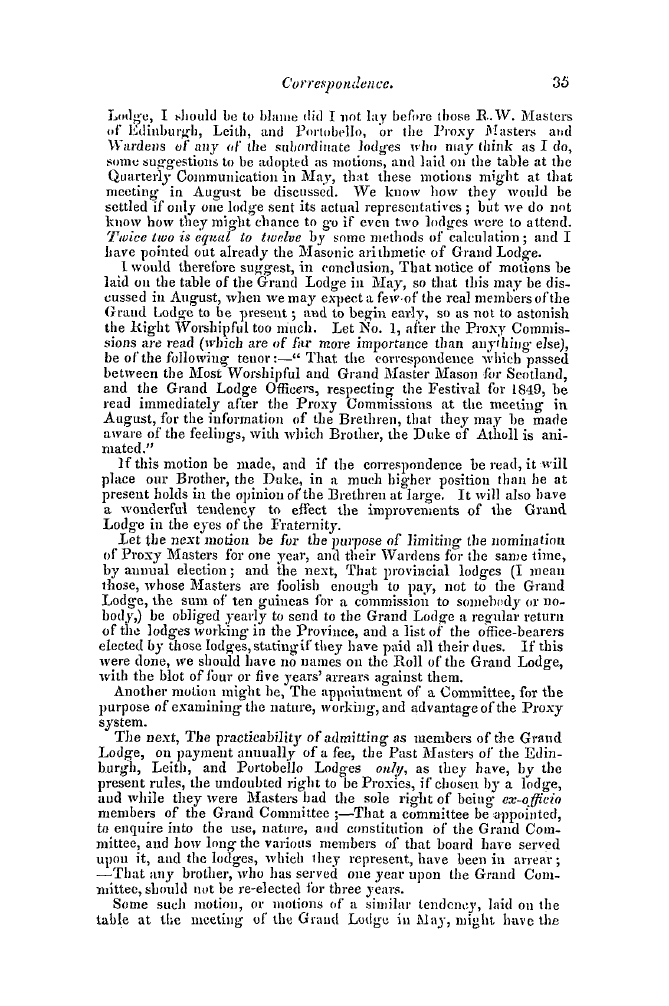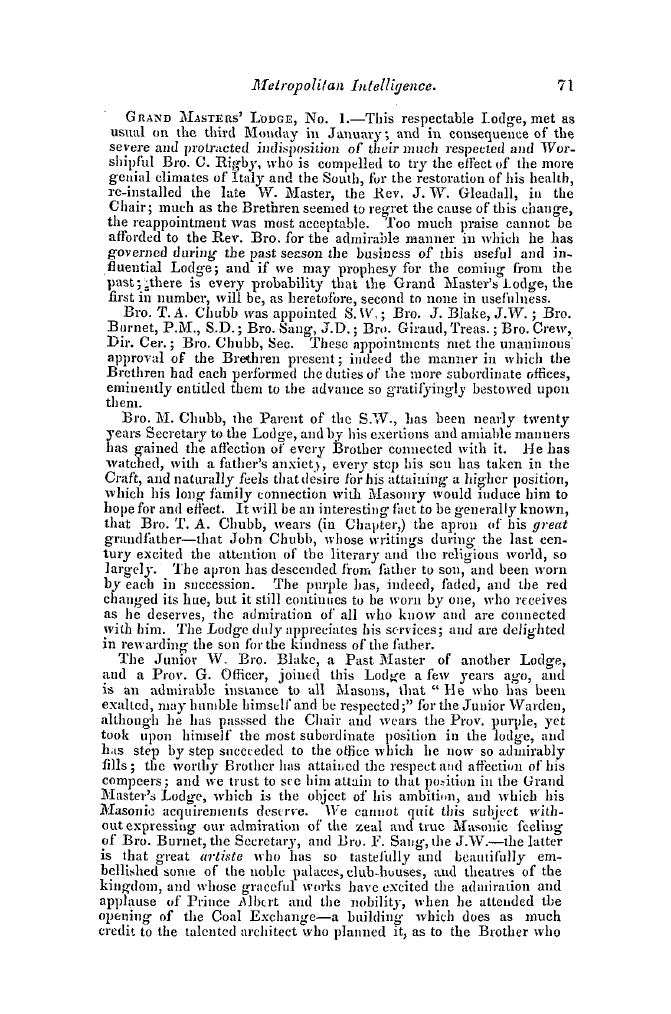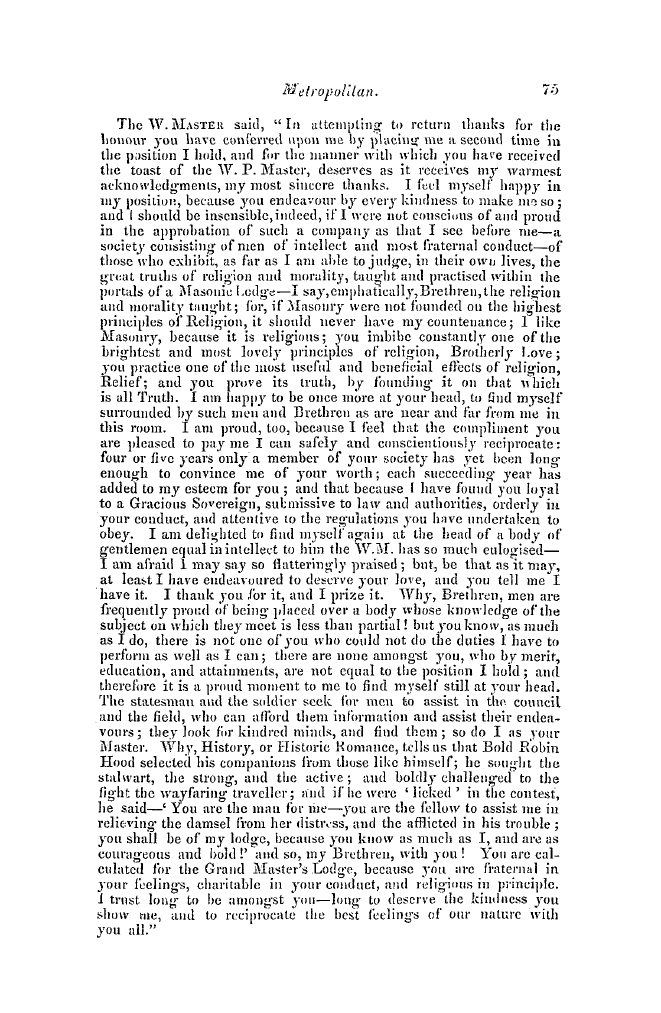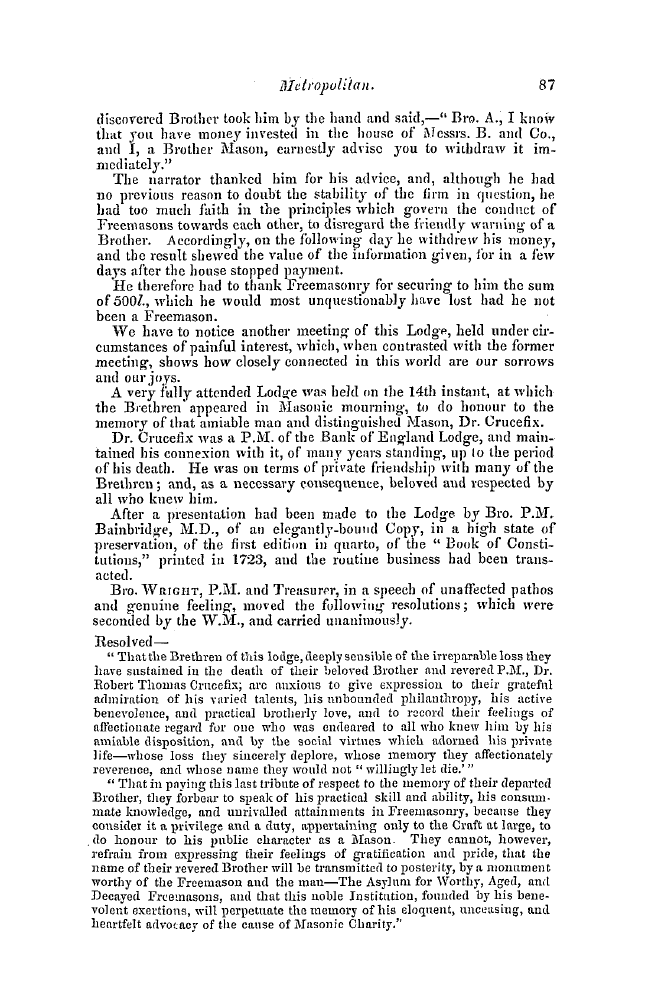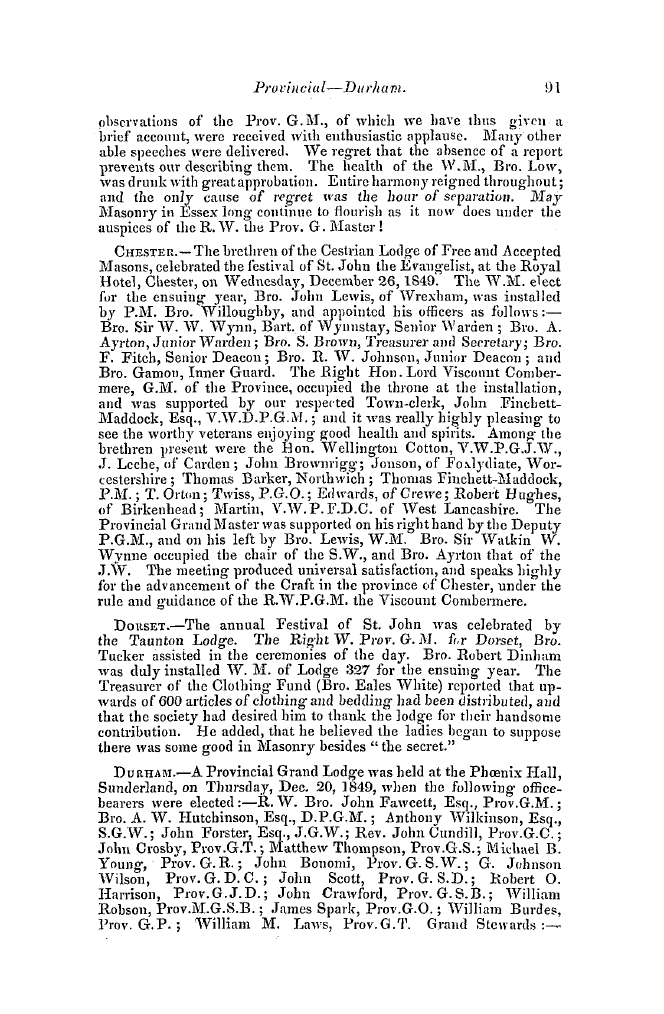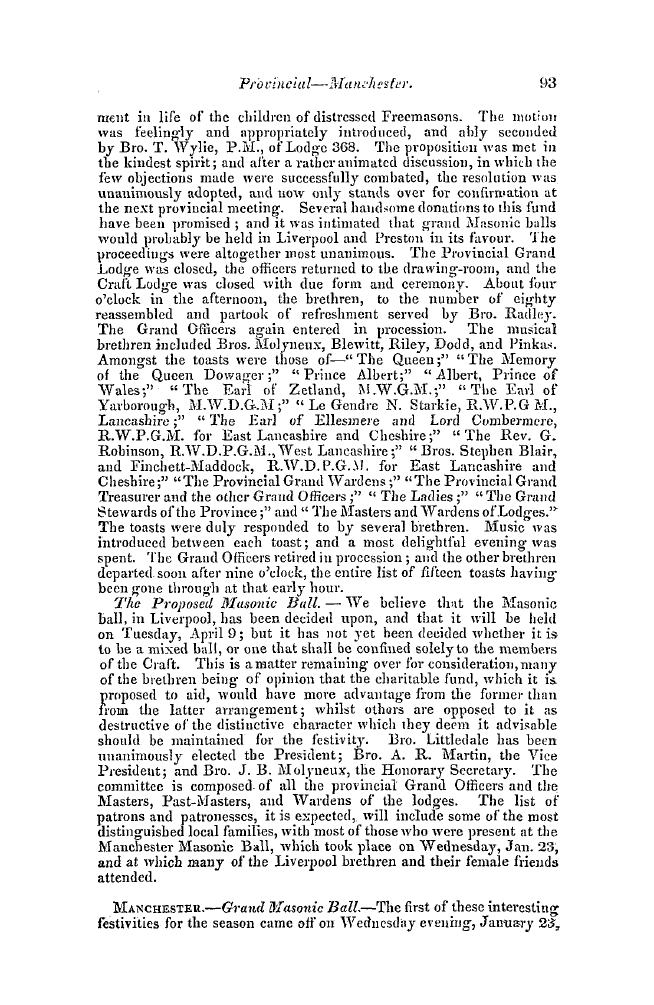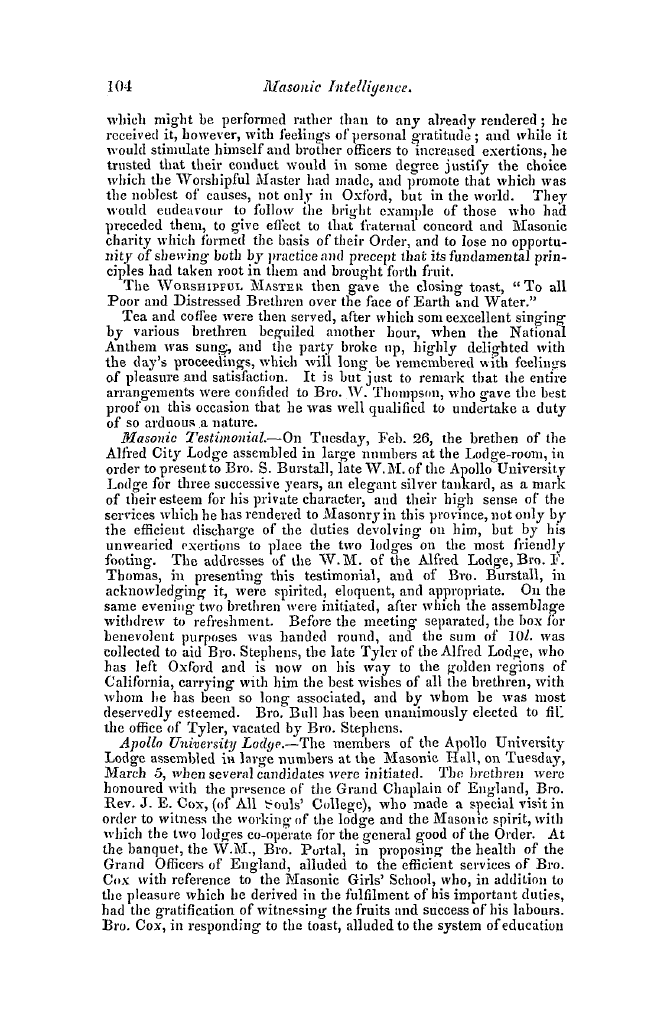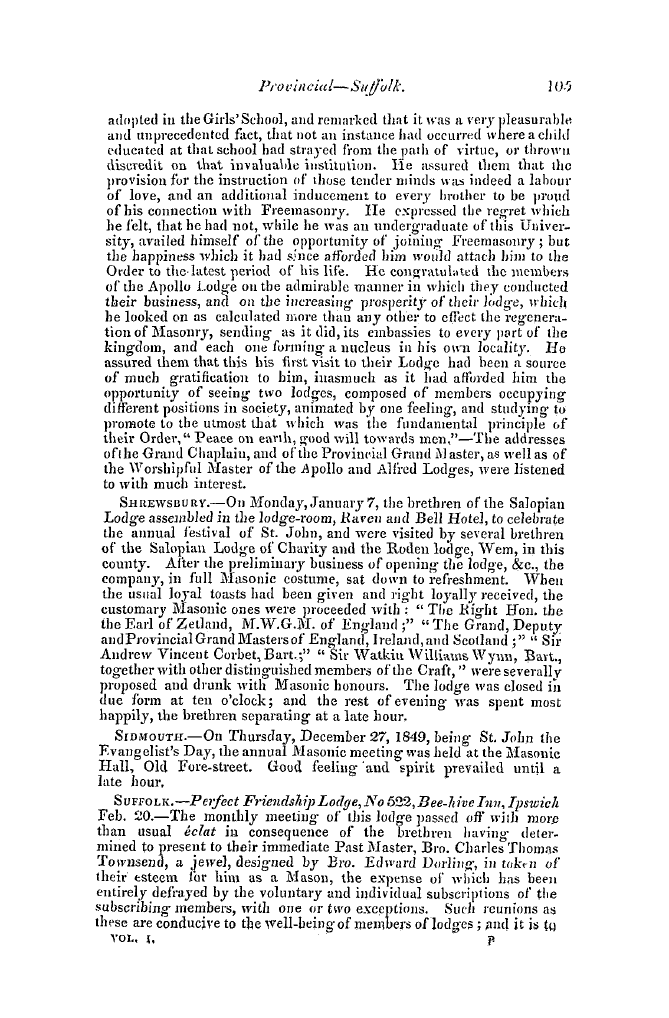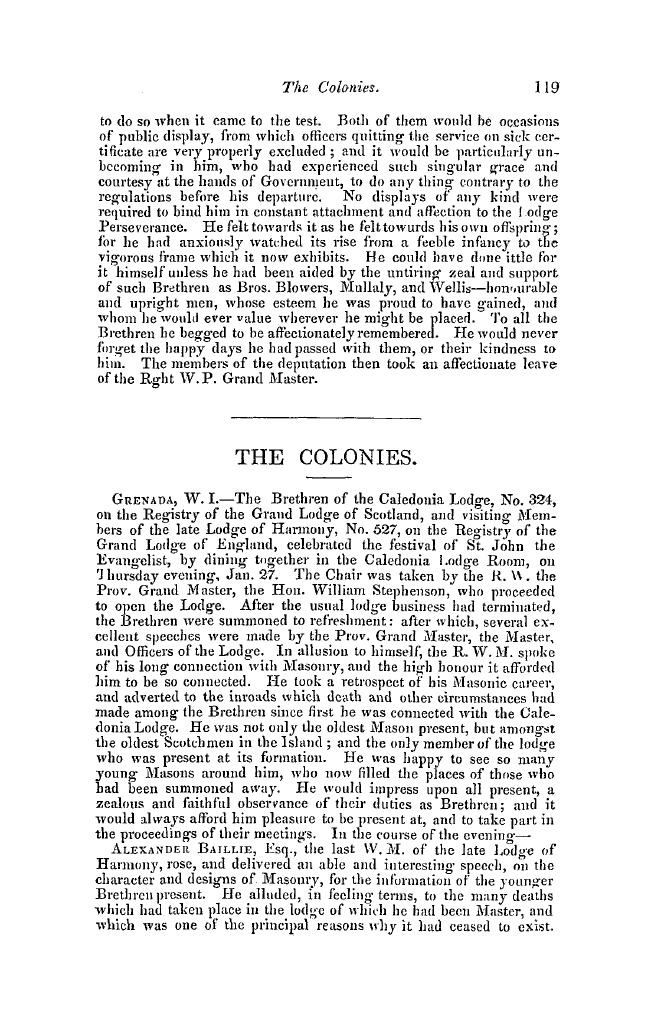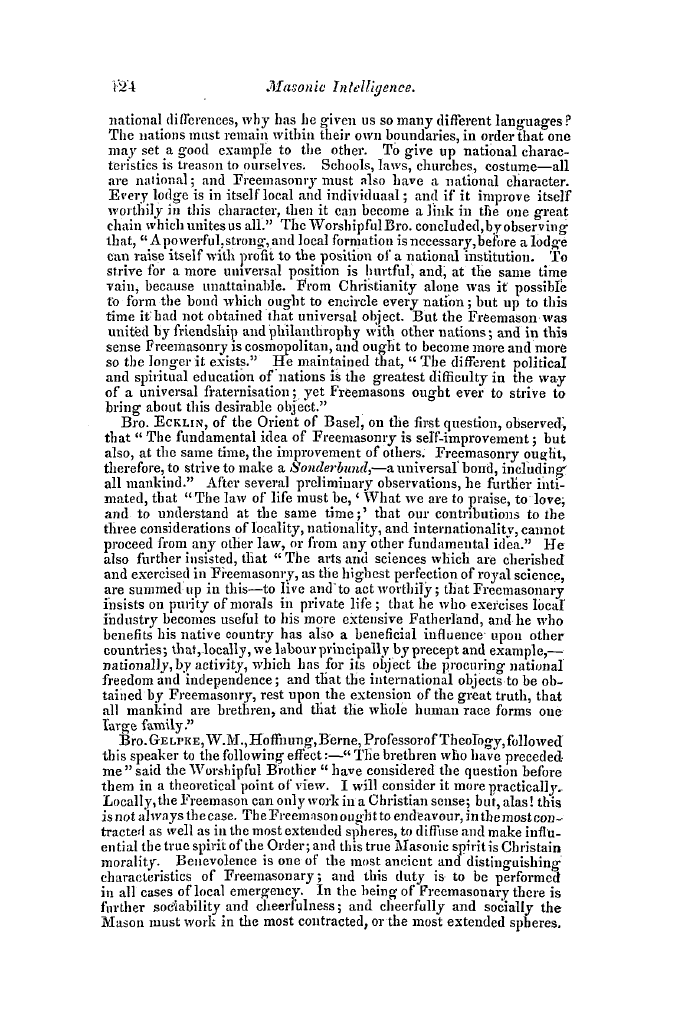-
Articles/Ads
Article GLASGOW MASONICS. ← Page 2 of 12 →
Note: This text has been automatically extracted via Optical Character Recognition (OCR) software.
Glasgow Masonics.
opinion of Bro . Aytoitn on that , or any other subject , is every way worthy of respect ; but the antiquity of the "Lodge of Glasgow , " does not rest on the evidence of that charter alone , but on many other collateral proofs , leaving no doubt of a hi gh degree of antiquity ; and even if we should be mistaken as to Malcolm Clanmore ' s supposed connection with the document , it is assuredly a very ancient instrument , into the translation and interpretation of which some mistake may
have crept , and which proper inquiry will yet enable us to rectify . But , besides this , the "Lodge of Glasgow" possesses a degree of interest , that attaches to no other lodg-e iu the kingdom , from its being in a manner identified with one of the noblest and most perfect cathedral structures that yet remains to us in Scotland , to attest the marvellous skill of our Masonic Confreres of " the olden time , "—a structurewhose venerable site was consecrated amid solemn groves
, , which threw their sombre shadow over the dark and mysterious rites of Druidism , and resounded to the shrieks of its human victims , ere yet Columba bad taken up his residence in the tempest beaten Iona , and li g hted the lamp of a purer faith in that lonely isle—when the Acropolis of our "Modern Athens" ( whose glorious prospect at "Summer Eve" roused the poetic estro , and inspired one of the sweetesttrueststrains of the " Bard of Hope" ) looked down on a
, , , wild and savage district , sparely speckled with a few heathen huts . Six hundred years afterwards , this Lodge , fcst . John , under the Royal auspices of the sainted son of Cianmore , in the beginning of the twelfth century , replaced the rude Saxon chapel , or cell , which then covered the bones of the Apostle of Strath-Clyde , by a more spacious
edifice in the Norman , or Romanesque style , one of the earliest of the kind in Scotland ; and when some forty years later , this "Alma Mater multarum gentium" as it is designated in the Masonic Charter of William the Lion , was consumed by fire , they laid the foundationstone of the present beautiful crypt , am ! joined in the song of jubilee at its consecration ere that century closed . They reared the superincumbent Choir , so rich and rare in its sculptured beauty—poised with
wondrous skill on lofty clustered columns the ponderous tower and yracefully tapering spire— projected the transepts , extended tbe spacious nave , and expanded the aisles , during a period of four hundred years , in all the varied forms of that most picturesque of styles , the " Pointed Christian ; " and , ivhen the time came , that the faith of their fathers was no longer Catholic—when the pilgrimage was proscribed , the candles extinguished , the altars profaned— when relics had lost their influence aud
shrines their sanctity , and destruction with lurid wing hovered over the object of their pride and veneration , the gallant St . John ' s-men stood foremost in its defence , and were the honoured means of its preservation , as they had been the side instruments of its construction . It was the same St . John's Lodge which , scarcely fifty years afterwards , in honourable , but subordinate juxla-position to our ancient " Mary's Chapel , " along with the other more prominent and important
Lodges then in Scotland , renewed the destroyed charter to the hossl yn branch of tbe noble house of Clair , and have , till this day , maintained their integrity as an incorporation and a lodge . The admission of this lodge to an honourable connection with the Grand Lodge , will not increase the estimation , in wliich it is already deservedly held in the West ; for that is secured to it by the respectability of its members , and its inseparable connection with a wealthy and influential incorporation ;
Note: This text has been automatically extracted via Optical Character Recognition (OCR) software.
Glasgow Masonics.
opinion of Bro . Aytoitn on that , or any other subject , is every way worthy of respect ; but the antiquity of the "Lodge of Glasgow , " does not rest on the evidence of that charter alone , but on many other collateral proofs , leaving no doubt of a hi gh degree of antiquity ; and even if we should be mistaken as to Malcolm Clanmore ' s supposed connection with the document , it is assuredly a very ancient instrument , into the translation and interpretation of which some mistake may
have crept , and which proper inquiry will yet enable us to rectify . But , besides this , the "Lodge of Glasgow" possesses a degree of interest , that attaches to no other lodg-e iu the kingdom , from its being in a manner identified with one of the noblest and most perfect cathedral structures that yet remains to us in Scotland , to attest the marvellous skill of our Masonic Confreres of " the olden time , "—a structurewhose venerable site was consecrated amid solemn groves
, , which threw their sombre shadow over the dark and mysterious rites of Druidism , and resounded to the shrieks of its human victims , ere yet Columba bad taken up his residence in the tempest beaten Iona , and li g hted the lamp of a purer faith in that lonely isle—when the Acropolis of our "Modern Athens" ( whose glorious prospect at "Summer Eve" roused the poetic estro , and inspired one of the sweetesttrueststrains of the " Bard of Hope" ) looked down on a
, , , wild and savage district , sparely speckled with a few heathen huts . Six hundred years afterwards , this Lodge , fcst . John , under the Royal auspices of the sainted son of Cianmore , in the beginning of the twelfth century , replaced the rude Saxon chapel , or cell , which then covered the bones of the Apostle of Strath-Clyde , by a more spacious
edifice in the Norman , or Romanesque style , one of the earliest of the kind in Scotland ; and when some forty years later , this "Alma Mater multarum gentium" as it is designated in the Masonic Charter of William the Lion , was consumed by fire , they laid the foundationstone of the present beautiful crypt , am ! joined in the song of jubilee at its consecration ere that century closed . They reared the superincumbent Choir , so rich and rare in its sculptured beauty—poised with
wondrous skill on lofty clustered columns the ponderous tower and yracefully tapering spire— projected the transepts , extended tbe spacious nave , and expanded the aisles , during a period of four hundred years , in all the varied forms of that most picturesque of styles , the " Pointed Christian ; " and , ivhen the time came , that the faith of their fathers was no longer Catholic—when the pilgrimage was proscribed , the candles extinguished , the altars profaned— when relics had lost their influence aud
shrines their sanctity , and destruction with lurid wing hovered over the object of their pride and veneration , the gallant St . John ' s-men stood foremost in its defence , and were the honoured means of its preservation , as they had been the side instruments of its construction . It was the same St . John's Lodge which , scarcely fifty years afterwards , in honourable , but subordinate juxla-position to our ancient " Mary's Chapel , " along with the other more prominent and important
Lodges then in Scotland , renewed the destroyed charter to the hossl yn branch of tbe noble house of Clair , and have , till this day , maintained their integrity as an incorporation and a lodge . The admission of this lodge to an honourable connection with the Grand Lodge , will not increase the estimation , in wliich it is already deservedly held in the West ; for that is secured to it by the respectability of its members , and its inseparable connection with a wealthy and influential incorporation ;
